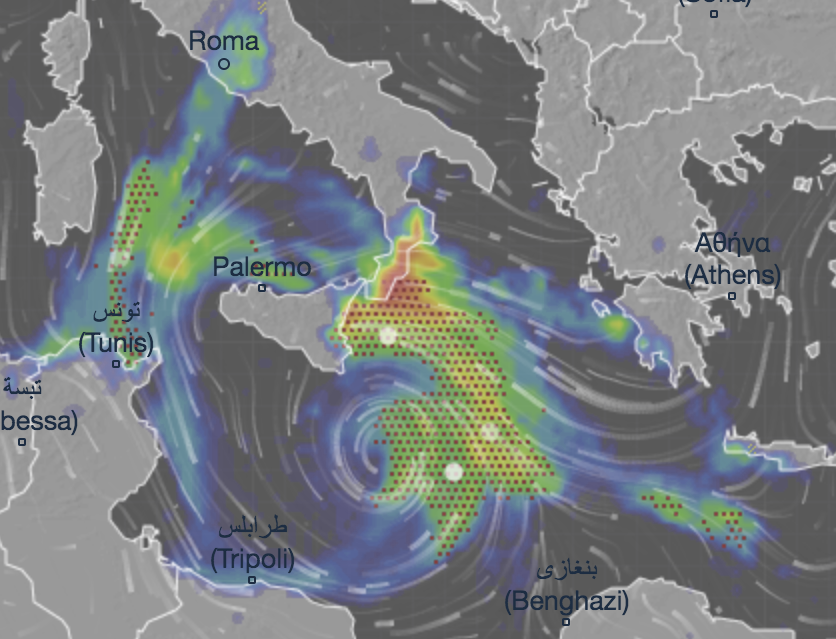Methods for understanding Extreme Events in the Earth System
Información del evento
- Lugar:
- Modalidad presencial
- Inicio:
- |
- Finalización:
- |
- Ponente:
 Current Intense Mediterranean Cyclone in Sicily, 26th of October of 2021. Source: Ventusky, NOAA and DWD
Current Intense Mediterranean Cyclone in Sicily, 26th of October of 2021. Source: Ventusky, NOAA and DWD
El área de Física de la Tierra tiene el placer de invitaros al seminario que lleva por título "Methods for understanding Extreme Events in the Earth System" y que será impartido por Davide Faranda, Permanent CNRS Researcher en el Laboratoire des Sciences du Climat et de l'Environnement (LSCE, IPSL, Université Paris-Saclay), Gif-sur-Yvette, France. El seminario se celebrará en inglés, el martes 27 de octubre a las 11:00h en el aula 8 del Edificio 13.
Methods for understanding Extreme Events in the Earth System
How can we understand complex systems, such as the Earth System? Complex is what we perceive as spatially, temporally and dynamically rich. In the Earth System, this richness takes the shapes of turbulent vortices, the rage of a thunderstorm, the exponentially fast diffusion of a virus, an economic crisis and endless others. I will present a physically-informed machine learning approach, which combines notions from statistical physics and dynamical systems theory to devise statistical tools that act as magnifying glasses for complex systems. The first specific question I will tackle is how to determine the number of variables, equations or data that we need to describe a specific event within the system we examine. We will see that one may study turbulent flows (such as the von-Karman flow) in a confined geometry with just three simple dynamical equations, which allow for short-term predictability of the flow. Next, I will focus on studying extremes, or rare events, in the system of interest. Using the Earth's atmosphere as example, we will see that extreme events correspond to specific bricks of the underlying and unknown mathematical geometry of the system, namely unstable fixed points of the dynamics. Equipped with these statistical tools, we can search for the footprint of unstable fixed points in the Earth System and discover their correspondence with extreme events encountered in the everyday life, such as turbulent vortices in the atmosphere, storms, hurricanes or earthquakes.
